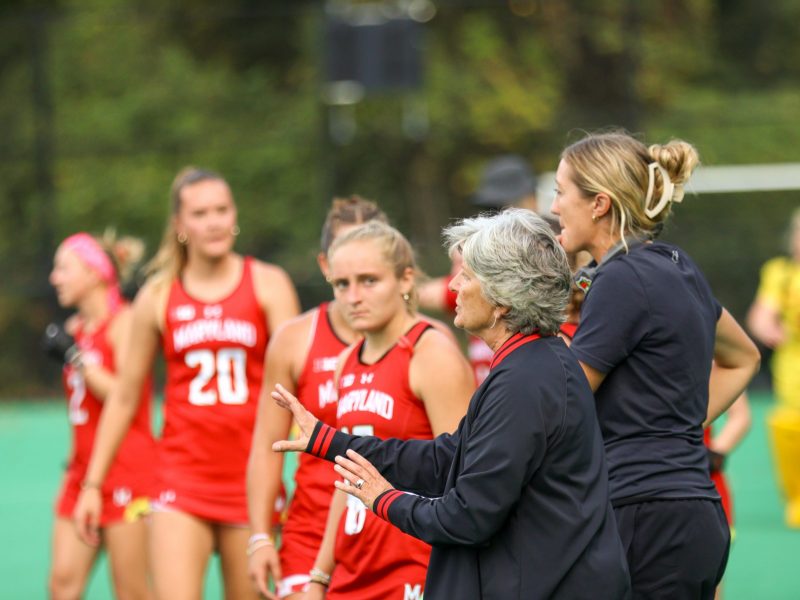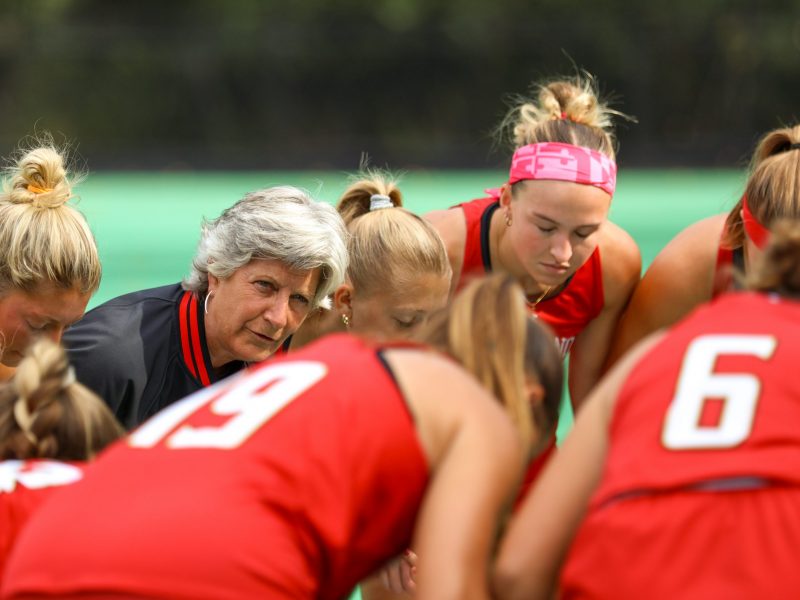After the Maryland field hockey team’s 4-1 loss to Syracuse on Aug. 28, coach Missy Meharg said her squad had “work to do” on its corner defense.
In the few weeks since, the emphasis has shown.
Against No. 13 Princeton on Tuesday, the No. 6 Terps surrendered five penalty corners but didn’t allow the Tigers to score on any of the looks. It helped the team earn a 2-1 win at Bedford Field.
“We worked really hard last week and the week before, especially to try and correct them,” defender Grace Balsdon said. “It seems like it’s paid off.”
Saint Joseph’s and Syracuse, Maryland’s first two opponents of the year, combined to score three goals off seven corner tries. In the six games since, the Terps’ opponents have gone 3-for-18 in the foul looks.
That’s helped Maryland’s defense rebound from a 1-2 start. Though the Terps haven’t pitched a shutout yet, No. 1 Syracuse is the lone team to have scored more than two goals in their meeting.
After the season opener, Meharg said one or two corners can “change the game,” so preventing scoring off the chances gives a boost to the defense’s efforts.
Much of the difficulty with defending penalty corners stems from tracking the opponent’s small touches and deflections because teams don’t always take a direct shot from the top of the circle.
“First priority is to not let people deflect the ball,” Meharg said. “A lot of teams like to drag or sweep [the ball] in for [players] to touch them, and we’re doing a very good job of stepping on those sticks and making sure they can’t touch them.”
That makes goalkeeper Sarah Holliday’s job easier. After notching one save on the corners in the team’s first four games, she’s recorded five in the last four outings.
“It means our goalkeeper can then have the vision to make the saves,” Balsdon said.
Against Princeton, though, Holliday didn’t have to defend the penalty looks often. The Terps’ defense disrupted each of the Tigers’ five corners before they could manage a shot. Forward Emma Rissinger led the charge as the first player out of the cage, running toward the top of the circle.
“Rissinger and [defender] Courtney Deena [have been] flying up and putting a lot of pressure on the ball,” Meharg said. “That’s taking a lot of vision and opportunity away.”
Meharg took some responsibility for the team’s early struggles, saying the defensive formations she had her team use against Syracuse didn’t work well.
Since then, the Terps have watched film to identify areas for improvement.
“We talk through how we adjust to certain passes and how we’re going to step up to a ball, and how we’re going to clear the ball out if [our goalkeeper] stops it,” defender Carrie Hanks said. “Our focus is to get a stick on the ball.”
Once the Terps master the strategy, they focus their physical work with “muscling” opponents out of position, Balsdon said.
“We’re trying to get a real grit in ourselves,” Hanks said. “We’re not letting anybody step in front of us to get tips.”
“We’d rather not give up corners at all,” Hanks added. “But if we give them up, we’re doing everything in our power to stop the ball and clear it as best we can.”



